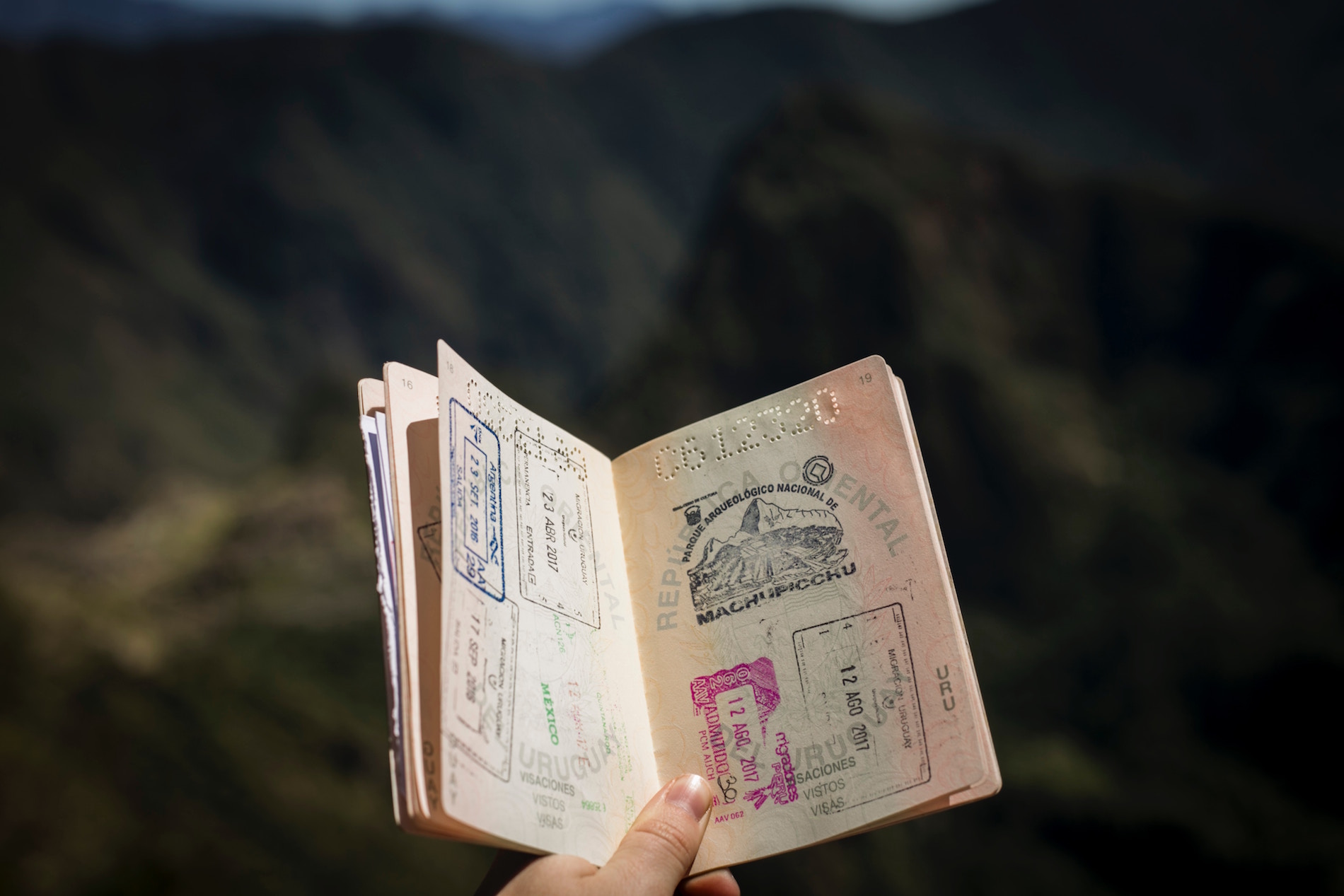In my family—and in higher education culture in general—being successful means having a career lined up by the time you graduate college.
Setting up a career after graduation had been my plan for as long as I could remember. I hadn’t even considered that there were options for a post-graduate lifestyle outside of committing to a 9-5 office job and (hopefully) doing something within the field of my major.
My new plan started last summer after a month-long study abroad trip to the Netherlands, where I studied travel writing.
I went into the trip thinking I would spend a month writing in a foreign country and I would feel fulfilled to return to Emerson College in Boston in the fall. I would continue my lifelong plan to graduate with a publishing degree after four years, land an editorial job at a publishing company in Manhattan, move up in the company over the course of five years, leave to go freelance with an extensive clientele list and travel the world while making money editing books. In ten years max, without any bumps along the way, I would be living my dream!
The train rides were what changed my mind.
As we traveled between countries—Germany, Belgium, the Netherlands, Italy—I would write about all of my cherished experiences and thoughts from the day before. In class, we read different articles written by professional travel writers, and I learned how to write my own. Suddenly, my dream was so much closer than I had imagined it could be. When I went back to the Boston campus, I learned that my study abroad credits would allow me to graduate almost a year early. A game plan began to form.
Step 1: Research
 Photo by Emily Rudolph on Unsplash
Photo by Emily Rudolph on Unsplash
Visas are a tricky business. Most European countries are part of the Schengen Area, which allows US citizens to travel within the area for three months at a time on a tourist visa, but I knew I would run out of money fast that way (a month traveling around Europe cleaned out my bank account and exhausted me).
I needed a year in one place, at the least. That meant that either I had to get a student visa and continue my education or I had to land a work visa.
I immediately crossed the student visa off my list – there’s something about learning you can graduate a year early that makes you never want to write an academic essay ever again. So the only option left: the work visa.
As an American, I always had the privilege of not worrying about visas. Immigrants were purely a political issue until suddenly I was faced with the opportunity of becoming one. And let me tell you, researching work visas almost killed my spirit, as well as all my hopes and dreams.
As a soon-to-be college graduate, I had almost zero work experience in my field, save some positions at on-campus publications and an editorial internship at a Boston magazine. I soon learned that real working professionals waited years to obtain a working visa for places like England and Ireland because you have to find a company that wants to sponsor you (pay for your visa). What company was going to want to sponsor a 21-year-old American girl fresh out of university?
But don’t stop reading. I’m here now, remember?
After a few weeks of researching immigration laws in different countries around the world, as well as the possibility of actually getting a job as an American, I stumbled upon my holy grail: the Working Holiday Visa. Why had no one told me about this before? Why wasn’t everyone talking about it?
The Working Holiday Visa
 Photo by Agus Dietrich on Unsplash
Photo by Agus Dietrich on Unsplash
The Working Holiday Visa is encouraged by several different countries that host international youth or recent graduates who want to work without sponsorship for one year. The countries that offer these visas are Ireland, New Zealand, Australia, South Korea, and Singapore.
Each country has different requirements for their visa, such as falling within a certain age range or being from specific countries, but they are all extremely accessible to recent graduates or young adults from America.
So how did I choose Ireland? When I graduated high school, my extended family and I went on a trip across the island to see where our ancestors came from. This meant walking around a lot of graveyards, but I still fell in love with the easy-going, friendly culture. When I returned to America, I vowed to spend a semester studying in Dublin, which didn’t end up working out since I was graduating early. So instead, I decided to spend a year working here. The culture is also pretty similar to the US, with a few small differences, such as the fact that I could never drive here because I would go through a round-about the wrong way and immediately die.
Step 2: Save
I made my plan in December. I was going to walk in the graduation ceremony in May and then take a few summer classes to finish up my degree. After August, I would be free to go wherever I chose.
I had less than a year to prepare to move across an ocean, alone. This is where some serious hustle becomes necessary.
An international move does not come without expenses, and I wanted to be overly prepared to handle unforeseen expenses and not end up back in Colorado by the next Christmas.
I needed to have $4,000 in my bank account to apply for the visa, which itself costs around $300. I had to buy a round-trip ticket (so they know you can leave the country), as well as a year’s worth of travel insurance. I needed enough money to stay in hostels or Airbnbs when I first arrived and before I found an apartment, which I would then need enough money to put a down payment on. Upon arrival, I also needed another $300 to get my working permit. In other words, I had less than a year to save up approximately $6,000 (more, if possible).
Still, don’t stop reading. I had full-time classes, 14 hours of an internship a week, and multiple organizations I was a part of on campus. And all I had was a part-time job in retail. By October when I finally made my way across the pond, I still had $4,000 in my bank account, with most of the expenses already paid. It’s possible.
My advice is to tell everyone you know about your plan.
A lot of that money came from helpful relatives who were, most likely, worried that I would get to Ireland and be homeless and hungry. The Ireland Working Holiday Visa allows you to be any age over 18, but you have to either be recently graduated or still enrolled in higher education. That means graduation money.
 Photo by Artem Bali on Unsplash
Photo by Artem Bali on Unsplash
But also, you have to learn how to save. Working in retail is hard when you can’t spend any money on clothes. And I mean none. I ate a lot of pasta in last year’s trends, but sitting here now, it was so worth it. If you don’t already have a budget, I suggest creating one now (thanks for the bullet journal, Mom).
Step 3: Appointments, phone calls, bookings
I started getting all of the details ironed out around September. This part shouldn’t be too time-consuming if you plan it right.
The most important appointment you have to make is to submit your visa application. You’ll have to research where your closest embassy is and make sure that it’s valid for your place of residence. The validity of embassies varies depending on the state you live in, and there may not be an embassy in your state. Before you show up, you should have all of your other documents prepared. The visa application for Ireland had two parts, but when I first went to talk to someone at the visa office, I was told that I could submit them both at once to speed up the process.
Tip: go in and talk to someone instead of mailing your documents, if possible. They’ll review everything right there and tell you immediately if you need to fix something, instead of wasting time sending things back and forth in the mail.
When you walk into the visa office, you should have:
- A printed copy of the visa application that you’ve filled out
- Your original passport and a photocopy
- Two recent passport photos (take them at your local pharmacy)
- A transcript if you are still enrolled in college or proof of graduation
- Abank statement showing that you have $4,000 in your account
- A money order for the amount of the visa fee, made out to the consulate
If you want to speed up the process, also bring your stage two documents:
- Return airline tickets – you can make these for any date within a year of your arrival. I would recommend booking something for the holidays if you’re already planning to go home to visit during that time
- Proof of medical insurance valid for the duration of your trip. This was the most complicated and costly, so I would get on the phone and start talking to insurance companies in advance of the week you plan on going to the embassy
The woman at the visa office went through all of my documents with me and then told me that she would be creating my visa and sending it back to me by early the next week. The visa website said that it could take up to four weeks to receive a visa after applying, but I got mine in less than a week by going in and talking to someone in person!
After you get approved, immediately research what you have to do upon arrival in your country.
I had to make an appointment with the Dublin immigration office to get a work permit within three months of entry, but they were completely booked up when I arrived. I should’ve looked into this in advance so that I could’ve been more prepared. I need to work permit to get a job, a bank account, and an apartment. Luckily I am a freelance writer, so I am still able to earn a living no matter where I live, but don’t make the same mistake I did.
Step 4: Start detangling yourself from your American life
Know that this huge life change that you’re embarking on is going to be amazing, even if it’s hard work. As someone who likes to have plans and control over everything, this part was hard. I was jumping into the unknown without any sort of family or support system nearby. I was abandoning my plans, which I had been working toward for years. I was leaving everyone and everything I had ever known.
It was worth it.
I had about a month between getting approved for my visa and my flight to Ireland, so I decided to move home and spend time with family before I left. I ended up traveling all over during that month, visiting friends and extended family members who I wouldn’t see for who knows how long. By the time the day of my flight came around, I was so ready to set off on my own, and I haven’t looked back.
Don’t stress out too much about getting a job or an apartment before you arrive.
Budget so that you can survive for a month in a hostel or Airbnb without working (many Airbnbs give huge discounts for long-term stays). Companies won’t take you seriously until you can put an Irish address on your resume, even if it’s the address of a hostel, and you’ll want to go and visit apartments in person before you sign over thousands of euros. If you go to a bigger city such as Dublin, jobs and apartments will always be available, even if they are only temporary.
Fear will show you how brave you are, and stepping into the unknown will allow you to discover things about yourself that you never could’ve if you’d stayed in your same routine.
So go. Take action. Live your dreams. If you don’t, who will? Insert many more cliches here, because they all apply. And if you’re planning on getting a Working Holiday visa to Ireland in the next year, definitely hit me up! We can go out for the best Guinness you’ve ever laid your tastebuds on.